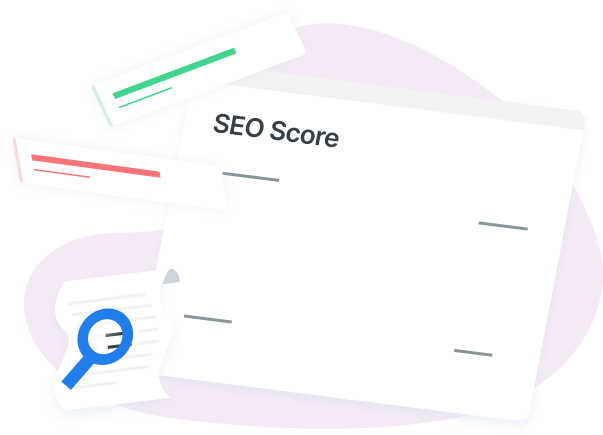-
 7 min. read
7 min. read
-
 Trevin Shirey
Trevin Shirey VP of Marketing
VP of Marketing
- Trevin serves as the VP of Marketing at WebFX. He has worked on over 450 marketing campaigns and has been building websites for over 25 years. His work has been featured by Search Engine Land, USA Today, Fast Company and Inc.
Do you need a flexible way to learn SEO for free?
While search engine optimization (SEO) isn’t a cut-and-dried topic, starting doesn’t have to be daunting or expensive. In fact, you can enter your URL here to learn which areas to focus on first, based on your site’s SEO.
Everyone starts somewhere before they’re considered a pro — all you need is easy-to-follow steps to traverse the standards of Google, Yahoo, and Bing.
In this SEO bootcamp, you can run through basic SEO principles and gain useful resources to jump into later. Keep reading for six simple steps to learn SEO, or contact us online to speak with an expert about our SEO services.
You can also give us a ring at 888-601-5359.
1. Understand the goal of SEO
Businesses have different marketing goals, but every company shares the desire to boost revenue — and that’s the general purpose of SEO.
Improving your site with SEO allows you to rank at the top of search engine results pages (SERPs), sparking revenue-inducing traffic.
Before that completely sinks in, you have to grasp the inner workings of search engines.
Google and other leading search engines have “spiders” or “bots” that crawl the Internet to find, index, and rank sites. When someone enters a search, search engines deliver a list of websites with relevant content.
Search engines need to find your site, so that should be your first order of business. You can ask Google to index your URL with their URL Inspection Tool and Bing via their Bing Webmaster Tools.
Now that we’ve explained SEO, let’s move on!
Additional Resources:
Google’s Webmaster SEO Starter Guide
Matt Cutts’ [Video] How Search Engines Work Video
2. Master keyword research
It takes research to pick the words you want to rank for — aka keywords. If you select keywords that people frequently search and that fit your business, you can get your site in front of a bigger audience.
There are two kinds of keywords — long-tail keywords that span three or more words and short-tail keywords that hold only one or two words. Long-tail keywords focus your pages and generate better interest.
For example, if someone searches “where to buy magazines,” it’s more precise than “magazines,” so you can appeal to their expectations better.
So, how do you know the top searches that relate to your industry?
You use keyword tools like Keywords Everywhere, Soolve, and KeywordsFX as you learn SEO. You can also glimpse at the keywords your competitors use for a little healthy SEO competition.
Keywords are central elements for SEO because you’ll weave them into your content, titles, meta descriptions, and URLs. Getting familiar with keyword research is a foundational step in your SEO journey.
Additional Resources:
WebFX’s Beginner’s Guide to Keyword Research for SEO
Moz’s Keywords and Keyword Research
3. Know the difference between on-page and off-page SEO
SEO happens in two places — on-page and off-page. What takes place on-page is what you can directly change when you learn SEO, while what takes place off-page is up to other sites.
It’s not surprising that on-page SEO is an easier topic to cover and understand. You manage multiple parts of your pages to please visitors and search engine bots.
On-page SEO involves formatting (like H1 and H2 tags), keyword usage, navigation, URLs, meta descriptions, and image descriptions or alt text.
But it goes far beyond this handful of factors, too, which takes a lot of careful work.
For off-page SEO, you have to rely on others’ opinions of your online content. Authoritative links to your site, mentions about your brand, and social media marketing all contribute to your off-page presence.
Checking off the boxes on both fronts is vital for successful SEO.
Additional Resources:
WebFX’s Free On-Page SEO Checklist
Ahrefs’ Actionable On-Page SEO Guide
Neil Patel’s Off-Page SEO Guide
4. Learn to identify UX signals
Search engines aim to satisfy people with the right results, so user experience (UX) plays a substantial role in SEO. Modifications to your site should prioritize users, making the design, functionality, and material fulfill their expectations.
Algorithms like Google’s RankBrain analyze user behavior to measure their level of satisfaction and preferences. Through machine learning, there’s now a closer look at the patterned practices of users.
The percentage of searchers who click on a search engine result, or the organic click-through rate (CTR), is one area of user experience that Google checks.
It helps to show the relevance and attractiveness of a result compared to others.
Another UX signal, dwell time, which is how long someone stays on a page before returning to the SERP, is also recognized by search engines, and it can influence your SEO performance.
Depending on the type of search query, a longer dwell time can demonstrate their interest in your result or show that they have trouble finding a clear answer. The keyword and material can indicate which response is more accurate.
These metrics reflect the condition of your SEO as you make tweaks and seek to optimize. Pay attention to UX signals during your SEO education to elevate your rankings.
Additional Resources:
HubSpot’s Simplified Guide to RankBrain
WordStream’s Battle-Tested Ways to Raise Your SEO CTR
Yoast’s What Are User Signals
5. Embrace SEO-friendly content creation
The content that you craft for your site — including blogs, informational articles, news releases, and videos — is the prime method for you to charm searchers and search engines. Skillful content creation can draw in traffic from Google if you follow SEO best practices.
Written content is convenient for search engine crawlers because they’re proficient in sifting through text. They’re looking for a balance of keywords, comprehensive information, and a digestible layout.
It’s essential to learn that SEO-friendly content correlates with length.
Longer posts, for example, have a better chance of assisting searchers in their hunt for knowledge or products.
Content needs to address the chosen topic thoroughly, and Google looks for polished articles rather than sloppy, churned-out posts.
Search engines also require fresh, original content and penalize results that only duplicate or copy words from other sites. During the process to learn SEO, beware of these penalties.
Additional Resources:
Search Engine Journal’s Tactics to Create Engaging and SEO-Friendly Content
WebFX’s How to Write SEO Content That Users Love
6. Start link building
In the collection of 200+ ranking factors for Google, links remain one of the top three. Links from other websites to your pages indicate to search engines how trusted and useful your site is to users across the web.  However, search engines can be extremely strict when it comes to questionable link building tactics.
However, search engines can be extremely strict when it comes to questionable link building tactics.
White-hat link building means you’re earning the admiration of other industry authorities, trusted reviewers, and the public.
You can construct a beneficial reputation by strengthening your network and boosting brand awareness.
Natural links can also come from guest blogging and requesting links to existing mentions. For example, let’s say your workforce management company was mentioned in an industry blog post. You can reach out to the author to provide a link to your website’s homepage.
Engaging in social media is an effective way to encourage people to read, share, and talk about your site.
This proactive approach often leads to link building when customers discuss your business with others.
Additional Resources:
Backlinko’s How to Build Backlinks
WebFX’s How Many Backlinks Should a Site Have?
Improve your SEO know-how with WebFX
Like anything worth knowing, it takes time to delve deep into SEO. To learn SEO, you have to continue to keep up with industry changes and search engine developments. With WebFX, you can benefit from our 28+ years of knowledge and experience.
Check out our beginner’s SEO checklist video (below) to understand what SEO actions you can take to improve your website’s search visibility.
Still curious about how to generate more revenue on your site?
Sign up for our weekly newsletter to get expert advice on your digital marketing strategy.
We’ve driven over 255,000 page one rankings on Google for our clients, and we can help deliver results for your site through our services, too.
For our robust SEO services, contact us online today or call us at 888-601-5359.
-
 Trevin serves as the VP of Marketing at WebFX. He has worked on over 450 marketing campaigns and has been building websites for over 25 years. His work has been featured by Search Engine Land, USA Today, Fast Company and Inc.
Trevin serves as the VP of Marketing at WebFX. He has worked on over 450 marketing campaigns and has been building websites for over 25 years. His work has been featured by Search Engine Land, USA Today, Fast Company and Inc. -

WebFX is a full-service marketing agency with 1,100+ client reviews and a 4.9-star rating on Clutch! Find out how our expert team and revenue-accelerating tech can drive results for you! Learn more
Try our free SEO Checker
Boost your site’s search performance with our free SEO Checker. Analyze your website for optimization tips on titles, headers, content, speed, and more. Get a free report now to enhance rankings on Google, Bing, Yahoo, and beyond!



How Is Your Website’s SEO?
Use our free tool to get your score calculated in under 60 seconds.
Try our free SEO Checker
Boost your site’s search performance with our free SEO Checker. Analyze your website for optimization tips on titles, headers, content, speed, and more. Get a free report now to enhance rankings on Google, Bing, Yahoo, and beyond!






